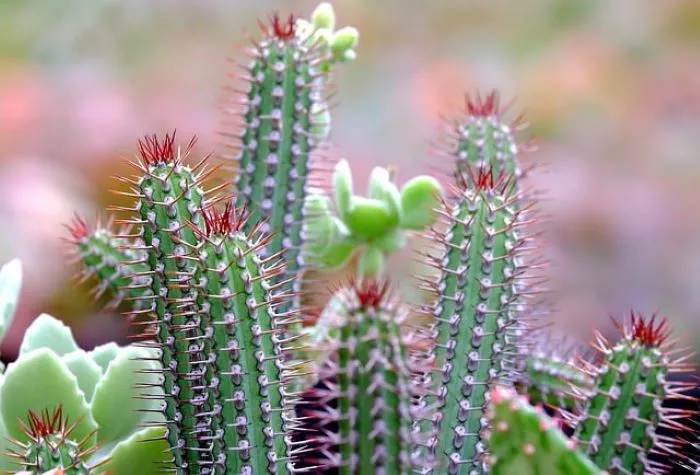Cactus flowers are a unique and fascinating aspect of the plant kingdom. Known for their striking beauty and resilience, these flowers bloom under specific conditions, often producing captivating fragrances. This article explores the scent of cactus flowers, the factors that influence their aroma, and the ecological significance of these scents.
Understanding Cactus Flowers
Cacti are primarily found in arid and semi-arid regions. They have adapted to survive in harsh environments by developing thick, fleshy stems that store water. Cactus flowers emerge from these stems, often during specific seasons or after rainfall. The flowers can vary significantly in size, shape, and color, ranging from small and subtle to large and vibrant.
The Aroma of Cactus Flowers
The scent of cactus flowers can vary widely among different species. Some cactus flowers are known for their pleasant and sweet fragrances, while others may have more subtle or even unpleasant odors. Here are some common characteristics of cactus flower scents:
Sweet and Fruity: Many cactus flowers, such as those from the genera Echinopsis and Saguaro, emit sweet and fruity scents. These fragrances can be reminiscent of tropical fruits, making them appealing to both humans and pollinators.
Floral and Spicy: Some cacti produce flowers with floral and spicy aromas. These scents can be complex and layered, often evoking the smell of traditional garden flowers mixed with earthy undertones.
Musty or Unpleasant: Not all cactus flowers have pleasant scents. Some species, particularly those that rely on specific pollinators like flies, may produce musty or foul odors. These scents mimic the smell of decaying organic matter, attracting pollinators that are drawn to such aromas.
Factors Influencing the Scent of Cactus Flowers
Several factors influence the scent of cactus flowers, including species, environmental conditions, and time of day.
Species Variation: Different cactus species produce flowers with distinct scents. For example, the night-blooming cereus, also known as the queen of the night, has a strong, sweet fragrance that is most potent at night. In contrast, the flowers of the barrel cactus may have a lighter, more subtle scent.
Environmental Conditions: The environment in which a cactus grows can affect its flower’s aroma. Factors such as humidity, temperature, and soil composition can influence the production of volatile compounds responsible for fragrance. For instance, higher humidity levels may enhance the release of aromatic oils.
Time of Day: Many cactus flowers are nocturnal, blooming in the evening and releasing their scents during the night. This adaptation attracts specific pollinators, such as moths, that are active at night. Conversely, daytime-blooming cacti may have scents that are more pronounced during daylight hours.
Ecological Significance of Cactus Flower Scents
The scent of cactus flowers plays a crucial role in their reproductive success. Fragrance serves as a signal to attract pollinators, which are essential for the fertilization of flowers. Here are some key points about the ecological significance of cactus flower scents:
Attracting Pollinators: The pleasant scents of many cactus flowers attract bees, butterflies, and hummingbirds. These pollinators are drawn to the flowers, facilitating cross-pollination and genetic diversity within cactus populations.
Repelling Unwanted Visitors: In contrast, the unpleasant odors produced by some cactus flowers can deter certain insects and animals that may harm the plant. By attracting specific pollinators while repelling others, cacti can enhance their chances of successful reproduction.
Survival Strategy: The ability to produce attractive scents can be seen as an evolutionary strategy. Cacti that effectively attract pollinators are more likely to reproduce successfully, ensuring the continuation of their species.
Cultivating Cacti for Their Flowers
For those interested in experiencing the scents of cactus flowers firsthand, cultivating cacti can be a rewarding endeavor. Here are some tips for growing cacti that produce fragrant flowers:
Choose the Right Species: Research cactus species known for their aromatic flowers. Consider varieties like Echinopsis, Saguaro, and the night-blooming cereus for their beautiful blooms and pleasant scents.
Provide Optimal Growing Conditions: Ensure your cacti receive adequate sunlight, well-draining soil, and proper watering. Healthy plants are more likely to produce vibrant flowers with appealing scents.
Monitor Blooming Times: Be aware of the blooming times of your cacti. Some species may only bloom once a year or during specific seasons. Timing your care and attention can help you enjoy the full experience of their fragrant flowers.
Conclusion
Cactus flowers offer a unique olfactory experience that varies significantly among species. From sweet and fruity to musty and unpleasant, the scents of cactus flowers play a vital role in attracting pollinators and ensuring reproductive success. Understanding the factors that influence these aromas can enhance our appreciation of these remarkable plants. Whether you are a cactus enthusiast or a casual observer, the scent of cactus flowers adds another layer of beauty to these resilient plants. Cultivating cacti can provide an opportunity to experience their captivating blooms and the delightful fragrances they produce.


